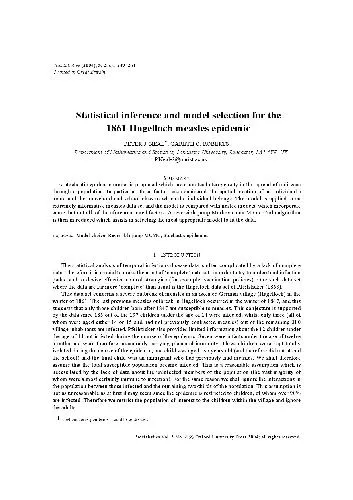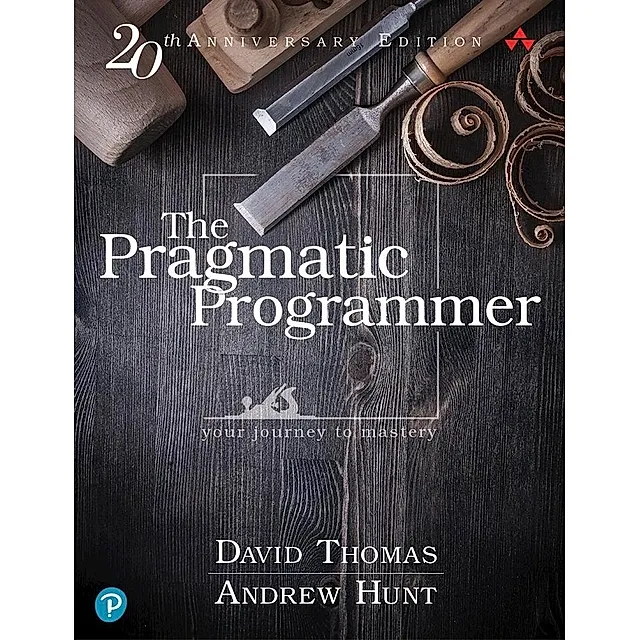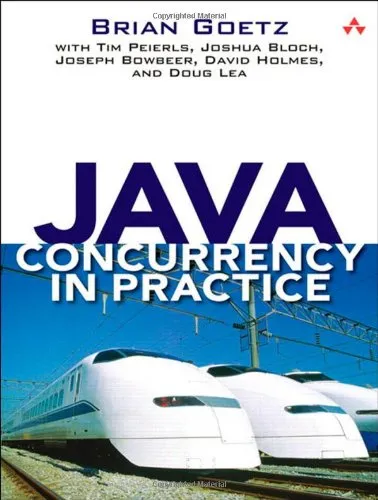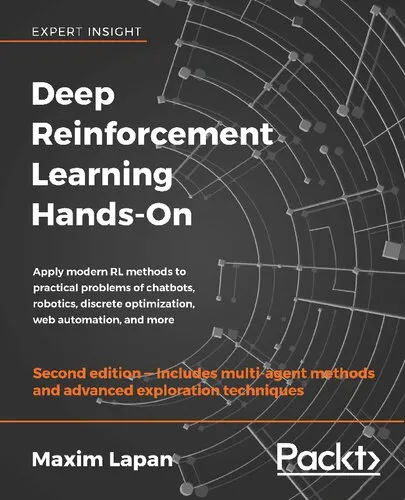Statistical inference and model selection for the 1861 Hagelloch measles epidemic
4.3
بر اساس نظر کاربران

شما میتونید سوالاتتون در باره کتاب رو از هوش مصنوعیش بعد از ورود بپرسید
هر دانلود یا پرسش از هوش مصنوعی 2 امتیاز لازم دارد، برای بدست آوردن امتیاز رایگان، به صفحه ی راهنمای امتیازات سر بزنید و یک سری کار ارزشمند انجام بدینکتاب های مرتبط:
پیشگفتار
کتاب "Statistical inference and model selection for the 1861 Hagelloch measles epidemic" به طور دقیق و جامع به مسئله بیماری سرخک در سال ۱۸۶۱ در شهر هاگلوخ میپردازد. این کتاب به وسیله تکنیکهای مدرن آمار و مدلسازی، الگوهای گسترش این بیماری را مورد بررسی قرار داده و به تحلیل جامع این اپیدمی میپردازد. هدف این کتاب نه تنها استفاده از ابزارهای آمار و مدلسازی برای فهم بهتر این اپیدمی تاریخی است بلکه به ارائه راههای بهینه برای تصمیمگیری در شرایط مشابه میپردازد.
خلاصهای جامع از کتاب
این کتاب به بررسی جامعی از تاریخچه و گسترش بیماری سرخک در هاگلوخ پرداخته و با استفاده از تکنیکهای مدرن، شامل Statistical inference و Model selection، تلاش میکند تا بهترین الگوها را برای درک بهتر روند شیوع بیماری پیدا کند. همچنین، نویسنده به بررسی تاثیرات محیطی و اجتماعی بر انتشار بیماری پرداخته است. این بررسی عمیق، اطلاعات دقیقی از دادههای قدیمی برای بازسازی شرایط آن زمان به ما ارائه میدهد.
نکات کلیدی
- اهمیت استفاده از دادههای قدیمی برای تحلیل و مدلسازی بیماریها.
- روشهای پیشرفته Statistical inference برای تحلیل و پیشبینی.
- تاثیر عوامل محیطی بر روی الگوهای گسترش بیماری.
- اهمیت انتخاب صحیح مدل برای درک بهتر دادهها.
نقل قولهای مشهور از کتاب
"آگاهی از گذشته ابزاری قدرتمند برای درک حال و آینده در مطالعات اپیدمیولوژیک است."
"مدلسازی نه تنها ابزاری برای پیشبینی بلکه راهی برای درک عمیقتر از رفتارهای پیچیده است."
چرا این کتاب مهم است
اهمیت این کتاب نه تنها در ارائه روشی نوین برای بررسی اپیدمی گذشته است بلکه کمکهای زیادی در پیشرفت مطالعات مدرن اپیدمیولوژیک داشته است. با بهرهگیری از روشهای آمار و انتخاب مدل، این کتاب به تحلیل دقیقی از تاثیرات گوناگون بر روی گسترش بیماری میپردازد؛ تأثیراتی که میتوانند به متخصصان بهداشت عمومی و سیاستگذاران در مدیریت بهینهی بیماریهای نوظهور کمک شایانی کنند. همچنین، این کتاب میتواند به عنوان یک منبع آموزشی قابلاعتماد برای پژوهشگران و دانشجویان علوم بهداشتی و علوم داده باشد.
The 1861 Hagelloch measles epidemic stands as a significant historical event, bridging the realms of epidemiology, statistical modeling, and public health. In 'Statistical Inference and Model Selection for the 1861 Hagelloch Measles Epidemic,' we embark on a journey that not only examines the profound impacts of this epidemic but also delves into the analytical methodologies that can be applied to such infectious disease outbreaks. This book serves as both a historical exploration and a technical guide, aiming to equip readers with comprehensive insights into how statistical inference and model selection are pivotal in understanding and mitigating epidemic outbreaks.
Detailed Summary of the Book
The book begins by contextualizing the 1861 Hagelloch measles outbreak within its historical setting. In this quaint German village, the rapid spread of measles among children provides a compelling case study for the application of statistical and epidemiological analysis. Early chapters focus on laying out the foundational aspects of the epidemic, such as its spatial-temporal dynamics and the social demographics of Hagelloch in the mid-19th century.
As the narrative progresses, we delve into statistical inference's role in dissecting and understanding the dynamics of the epidemic. Various methodologies, from basic statistical models to more sophisticated Bayesian approaches, are discussed. The book highlights the significance of accurate data collection and analysis in drawing meaningful conclusions about the epidemic's trajectory.
Further along, the text introduces the concept of model selection, explaining its necessity for predicting epidemic courses and evaluating intervention strategies. Through comparative analysis, readers are introduced to various models that illustrate different aspects of disease transmission, recovery rates, and population immunity dynamics.
Key Takeaways
- Historical Significance: Understanding the Hagelloch measles epidemic provides valuable insights into 19th-century disease dynamics and public health responses.
- Statistical Techniques: Learn about various statistical models and techniques used for analyzing epidemics, which remain relevant in today's context.
- Model Selection: Gain insights into the importance of selecting appropriate models to understand disease transmission and predict future outbreaks more accurately.
Famous Quotes from the Book
"Numbers have their own stories to tell when we allow them to be more than mere calculations."
"In the hazy lens of history, data provides clarity—not just of what was, but what could have been."
"Epidemics are not just biological events; they are deeply interwoven with the social fabric."
Why This Book Matters
This book is not merely an academic exercise in retrospectively analyzing a historical epidemic but is a thoughtful synthesis of past and present methodologies that continue to shape our understanding of infectious diseases. For epidemiologists, statisticians, and public health professionals, this work offers a wealth of knowledge on leveraging statistical inference and modeling to anticipate and control future outbreaks. Beyond the professional realm, it invites general readers interested in history and science to appreciate the complexities of disease dynamics and the vital role analytics play in public health decision-making.
دانلود رایگان مستقیم
شما میتونید سوالاتتون در باره کتاب رو از هوش مصنوعیش بعد از ورود بپرسید
دسترسی به کتابها از طریق پلتفرمهای قانونی و کتابخانههای عمومی نه تنها از حقوق نویسندگان و ناشران حمایت میکند، بلکه به پایداری فرهنگ کتابخوانی نیز کمک میرساند. پیش از دانلود، لحظهای به بررسی این گزینهها فکر کنید.
این کتاب رو در پلتفرم های دیگه ببینید
WorldCat به شما کمک میکنه تا کتاب ها رو در کتابخانه های سراسر دنیا پیدا کنید
امتیازها، نظرات تخصصی و صحبت ها درباره کتاب را در Goodreads ببینید
کتابهای کمیاب یا دست دوم را در AbeBooks پیدا کنید و بخرید
1362
بازدید4.3
امتیاز0
نظر98%
رضایتنظرات:
4.3
بر اساس 0 نظر کاربران
Questions & Answers
Ask questions about this book or help others by answering
No questions yet. Be the first to ask!















